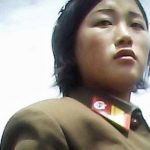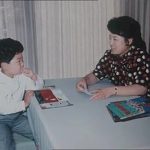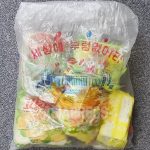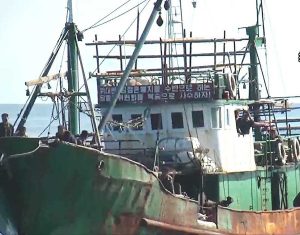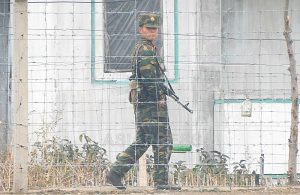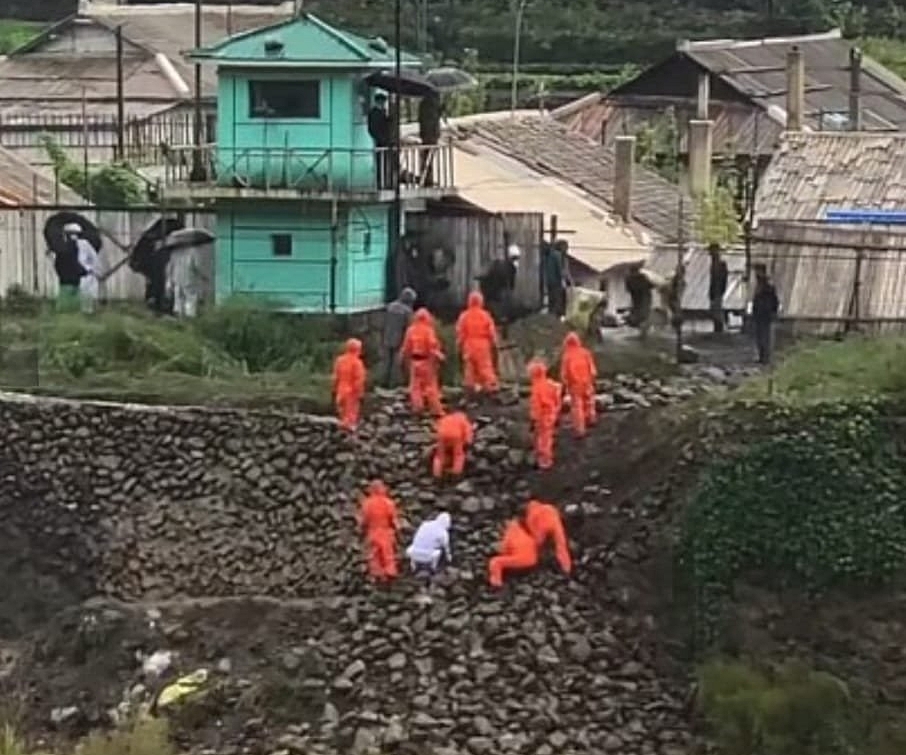
<Lighting Up N. Korea's Four Dark Years> (1) Almost the Only Escape Route -The New Generation ‘Donju’ Who Crossed the Sea Tell About COVID-19, Chaos, and Social Change
To understand what the pandemic North Korean people experienced, we will first look at the progress of the pandemic inside North Korea. Through this, we trace how events during the four-year lockdown period affected residents and society, and what changed as a result. This article focuses on the early stages of the pandemic, which began with border closures. (JEON Sung-jun)
◆The lockdown: The beginning of a chain of tragedies
In January 2020, North Korea closed its borders and instituted a robust quarantine system. The government's decision to impose such a strong and thorough border lockdown before any other country was likely the result of a realistic assessment that COVID could prove fatal to the regime, given its poor medical technology and resources.
In late 2020, ASIAPRESS obtained a document classified "top secret" by North Korean authorities.
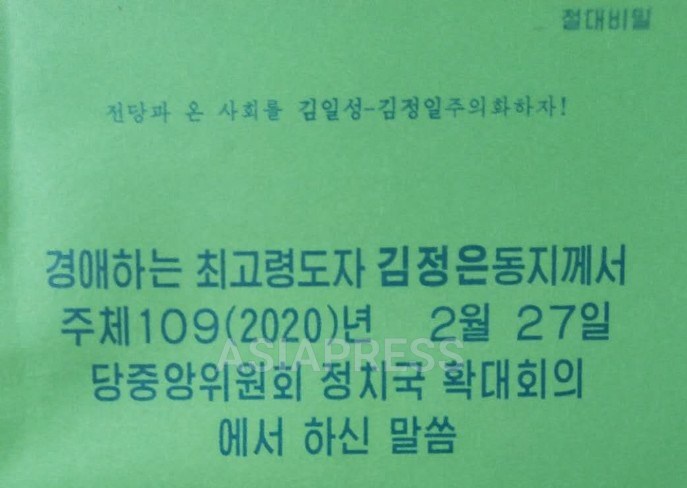
According to the document, titled "Remarks by Supreme Leader Kim Jong Un at the Expanded Meeting of the Political Bureau of the Party Central Committee on February 27, 2020, Juche 109 (2020)”, Kim Jong Un expresses extreme vigilance against the arrival of COVID in the country, laments the country's poor epidemic prevention system, which "cannot even produce a thermometer" and "burns wormwood instead of disinfectant," saying that "We have zero material and technological means."
"... It is obvious that the introduction of COVID, which even countries that claim to have sufficient material and technological bases in the health sector are unable to handle, will cause a greater disaster in our country than in any other country."
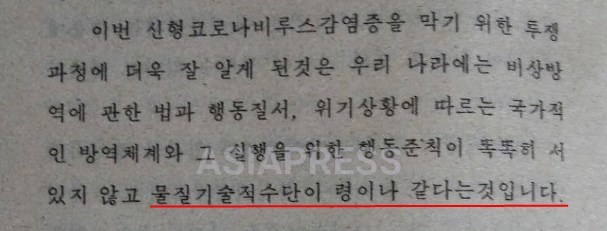
The total and complete closure of the border is a manifestation of this vigilance on the part of the Kim Jong-un regime. It, in turn, set the stage for the disaster that followed.
The border closure virtually halted trade with China, which accounts for more than 95 percent of North Korea's foreign trade. Statistics from the General Administration of Customs, China's equivalent of a customs agency, show that in March 2020, North Korea's exports to China totaled $610,000 and imports $18.03 million, down 96.2 percent and 90.8 percent, respectively, from the same period a year earlier. Given the inclusion of quarantine-related medical and pharmaceutical items, trade was effectively cut off.
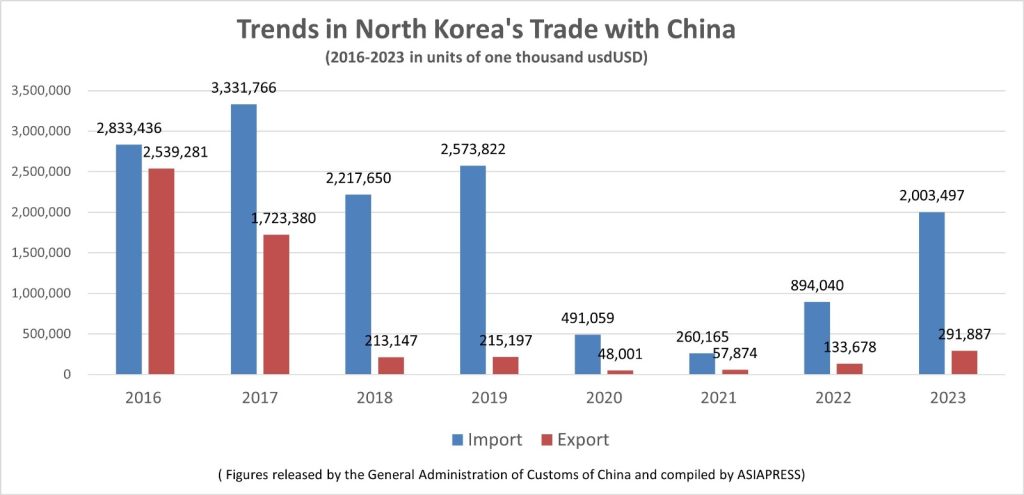
The collapse in official trade soon exposed the depths of North Korea's fragile economy.
◆Inflation was extremely high, people couldn't even buy a needle
As the government closed the border, Chinese goods began to disappear from markets and stores. North Koreans, who relied on Chinese goods for most of their consumption, soon began to feel the shortages, causing prices to skyrocket.
On February 7, 2020, an ASIAPRESS reporting partner in Hyesan, Ryanggang Province, described the situation on the ground as follows.
"The number of vendors has halved. There is nothing to sell and prices are skyrocketing because there are no daily necessities coming from China. People don't even want to buy anything except food, so the market is deserted."
This was about a week after the border closure.
Kim Myeong-ok (54, female, pseudonym) who fled to the East Sea with her daughter Kang Kyu-lin, 23, pseudonym, in October 2023, recalls the situation in the town in central South Hamgyong Province where she lived at the time.
"When I went to the market, there were no goods at all. A watch battery cost 15,000 won and a watch battery that cost 1,000 won (before COVID) went up to 15,000 won."
※ 1 dollar is about 17,000 North Korean won.
Kim Chung-yeol (33 years old, male, pseudonym), who escaped with his family by boat from Hwanghae Province to the West Sea in May 2023, described the situation this way.
"Even if we had money, we didn't have anything, not even a real needle, not even the basic sanitary napkins (pads) that women use, because we were banned from importing goods from China. It was really painful.”
Kim Myung-ok said she didn't even have lighters, so she used domestically made matches. "It's so unfortunate," she said, "because they're of such poor quality that they fall apart when you light them, and they're gone after just a few uses."
But that was only the beginning of a long hardship.
◆Suffocating markets, suffering people: “COVID is a nightmare”
Worse, the stagnation of the markets caused by the quarantine threatened the very survival of the people, whose cash income had plummeted.
Since the mid-1990s, when North Korea's rationing system nearly collapsed due to severe economic hardship, people have centered their livelihoods around naturally occurring local markets. Over the past 30 years, the markets have grown in size and diversity, and their influence on people's lives has increased even more.
Kang says the community's overall living conditions were relatively good before COVID, which made the crash feel even bigger.
"Most of the people I come in contact with have a lot of money, so I just believed that our society would continue to develop like this, but COVID changed my mind."
North Korea relied on imports from China, and the border closure stranded the trading companies that imported Chinese goods and the smugglers. This had a cascading effect, from the wholesalers in each region who relied on them to supply goods to the end users who sold directly to consumers in marketplaces.
Kim Myung-ok, who used to run a private business treating patients at home with acupuncture and moxibustion, said:
"The people I treated were people who had some money, but they were all upset. With the closure of the border, all the goods (disappeared). The market was deserted.”
As the blockade continued and trade came to a halt due to the blocked supply of goods, people in the market chain lost their livelihoods in masse. Panic set in and people did not know what to do.
In the next installment, we will explore how the government's ruthless quarantine policy added to the economic hardship caused by the blockade. (To 3>>)
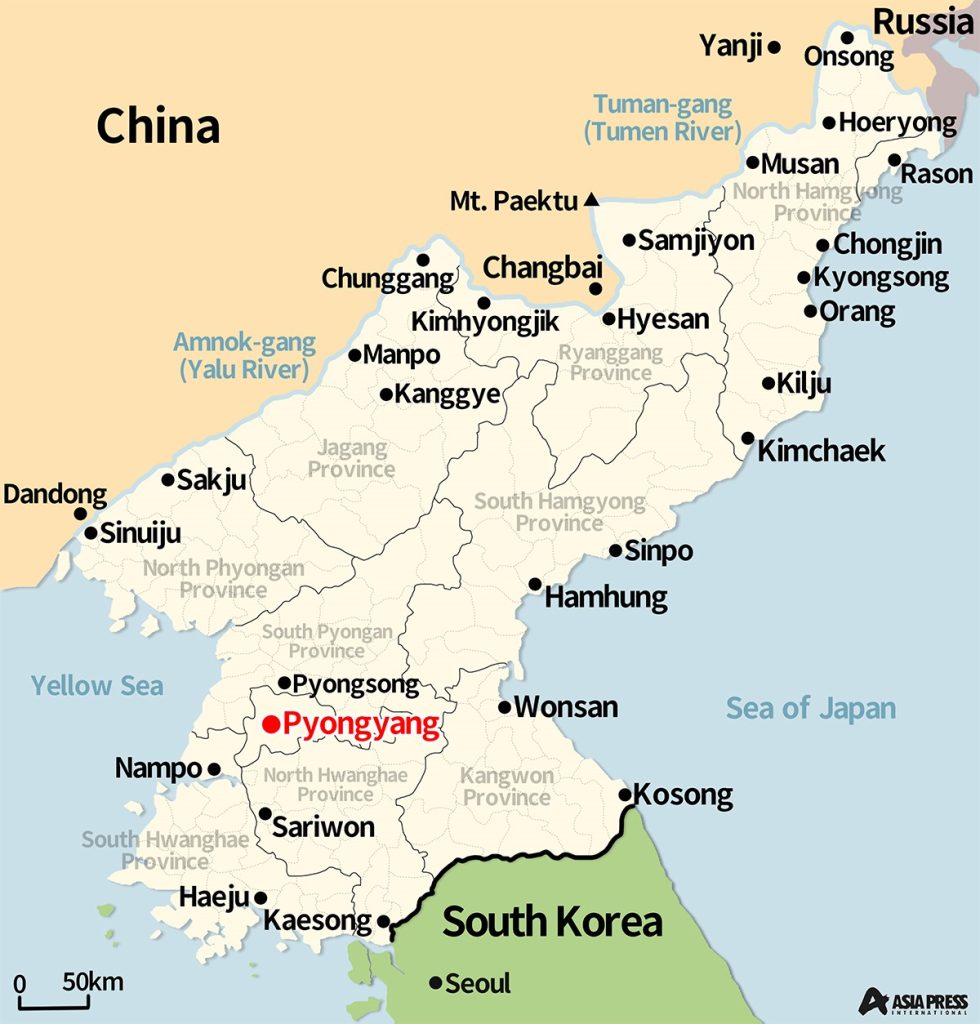
- <Lighting Up N. Korea's Four Dark Years> (10) The Capitalist Ghost Under the Socialist Roof (2) "Leave the Quota to Me" - Are Wealthy Individuals the Driving Force of Rural Economy?
- <Lighting Up N. Korea's Four Dark Years> (9) The Capitalist Ghost Under the Socialist Roof (1): From Private Ship Owners to 'Unions' Negotiating with the Central Party... Ship Owners Pushing Boundaries
- <Lighting Up N. Korea's Four Dark Years> (8) Pandemic-Induced Financial Crisis and the Regime's Response: 'Tax-Free' North Korea Imposes New Levies, Including 'Fireplace Tax'
- <Lighting Up N. Korea's Four Dark Years> (7) North Korea’s Pandemic Power Play: State Seizes Market Control as “Donju” Crumble
- <Lighting Up N. Korea's Four Dark Years> (6) Humanitarian Crisis is a Man-Made Disaster: Intensifying Chaos and Disorder... North Korean Version of 'War on Crime' as Told by COVID Survivors
- <Lighting Up N. Korea's Four Dark Years> (5) What Happened During COVID... "Drink Willow Branch Brew" - Misguided Quarantine Policies Only Led to Residents' Deaths
- <Lighting Up N. Korea's Dark Four Years> (4) “The People Are at the End of Their Tether”: A Country that Wants to Control Markets and Rule by Calories
- <Lighting Up N. Korea's Dark Four Years> (3) The Second Link in the Tragedy – Ruthless Quarantine Policy, "The State is Scarier than the Virus"
- <Lighting Up N. Korea's Four Dark Years> (1) Almost the Only Escape Route -The New Generation ‘Donju’ Who Crossed the Sea Tell About COVID-19, Chaos, and Social Change
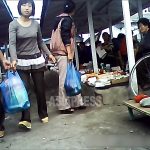
![[PHOTO REPORT] Winter, people strive to overcome the water crisis by drinking river water](https://www.asiapress.org/rimjin-gang/wp-content/uploads/2018/07/20150506_asiapress_01_X500-150x150.jpg)
